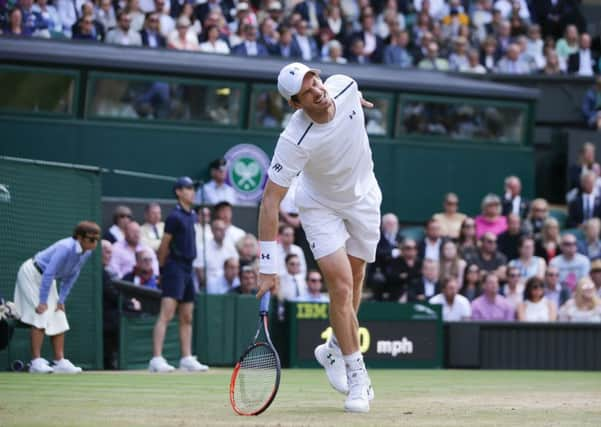Alix Ramsay: Painful to see talent treated like machines


We are told that this is the golden age of tennis. To have four players of the calibre of Andy Murray, Novak Djokovic, Roger Federer and Rafael Nadal competing against each other for more than a decade, to have them collect 48 grand slam trophies between them and make 82 appearances in grand slam finals (obviously, many of those finals were against each other) – that marks these four out as something special, something we are unlikely ever to see again.
Yet as Wimbledon approaches the business end of the competition, only the 35-year-old Federer is still standing. Murray is at home trying to find an answer to his hip problems, Djokovic is discussing with his specialists whether his chronic elbow issues need surgery and Nadal is lying on a beach in Majorca ruing the fact that his famously fragile knees cannot cope with grass-court tennis any more.
Advertisement
Hide AdAdvertisement
Hide AdWhy is this? Because Federer has stuck two fingers up to the rankings (in his own inimitable and suave way, of course) and has decided to run his professional life in a way that suits him.
He took six months off at the back end of last year to recover fully from the knee surgery he had in February. It also allowed the rest of his body to relax after 18 years on the road – all the niggles, aches and pains could heal fully and he would be ready for the new season. And he was: he won the Australian Open this past January.
He looked at the clay court season and decided it would cause too much wear and tear on his body and, instead, took a two-month break. Back on the grass, he won the title in Halle and has not dropped a set on his way to the last four here. He is playing brilliantly and there is not a hint that his 35-year-old body is flagging. He is the clear favourite to lift the trophy on Sunday.
The cost of this pared down schedule is that Federer is now ranked No 5 in the world and as the points stand this week, he is more than 4,000 points behind Murray at the top. It is a price he is prepared to pay to prolong his career.
“Sure, I’d love to be world No 1 again,” Federer said back in March on his way to winning the Indian Wells title. “But anything else other than world No 1 for me is not interesting. So that’s why the rankings is not a priority right now. It’s totally about being healthy, enjoying the tournaments I’m playing and trying to win those.”
Federer, though, is in a privileged position. By dint of being over 30, having been on the ATP tour for more than 12 years and having played more than 600 matches, he is not obliged to play any tournament if he does not want to. His ranking will suffer but he will not be fined. Nadal, at 31, is in the same position but Murray and Djokovic, who only turned 30 in May and so will have to wait until next season for such exemptions, are only allowed to drop one mandatory Masters 1000 per season.
The players’ tournament commitments are brutal. They must play the four grand slam events, eight Masters 1000 tournaments and another six events from the ATP 500 and ATP 250 series of events. For the world’s top 30, those other six tournaments must include four ATP 500s (the same level of tournament as Queen’s Club).
For the Big Four who come to win and not to make up the numbers, that is a fearsome schedule. If they were to reach the semi-finals of every tournament they played, that would be a commitment of 74 matches. Given that they are likely to win more than one of those events, the number of matches increases.
Advertisement
Hide AdAdvertisement
Hide AdMurray played 87 matches last year, 53 of them in the second half of the year. He won nine titles, he got to No 1 – and he ran himself to a standstill in doing so. Djokovic won the French Open last year to complete the non-calendar Grand Slam and has been mentally and physically shot ever since.
The authorities respond to this problem by tinkering with the game’s format (Davis Cup played over best-of-three sets, experimenting with shortened sets at some non-ranking events) but that only spoils the theatre and the drama for the paying public; it does not give the players any extra time off. And to withstand the rigours of the modern sport at the top of the game, the players need time to rest.
Unless tennis wakes up to the fact that its stars are human beings and not money-making machines, the golden age of tennis will turn to rust sooner rather than later.
